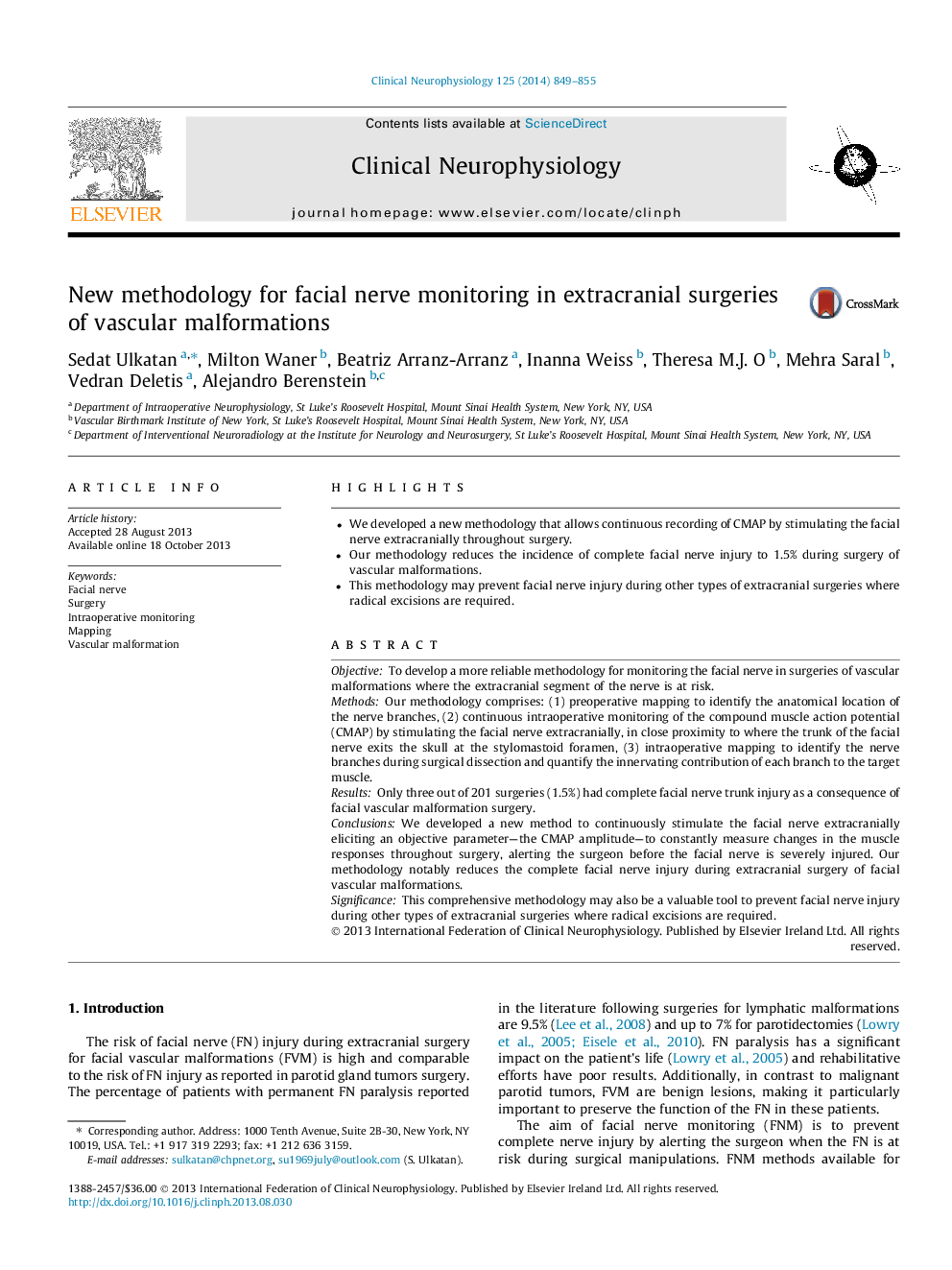| Article ID | Journal | Published Year | Pages | File Type |
|---|---|---|---|---|
| 6008445 | Clinical Neurophysiology | 2014 | 7 Pages |
â¢We developed a new methodology that allows continuous recording of CMAP by stimulating the facial nerve extracranially throughout surgery.â¢Our methodology reduces the incidence of complete facial nerve injury to 1.5% during surgery of vascular malformations.â¢This methodology may prevent facial nerve injury during other types of extracranial surgeries where radical excisions are required.
ObjectiveTo develop a more reliable methodology for monitoring the facial nerve in surgeries of vascular malformations where the extracranial segment of the nerve is at risk.MethodsOur methodology comprises: (1) preoperative mapping to identify the anatomical location of the nerve branches, (2) continuous intraoperative monitoring of the compound muscle action potential (CMAP) by stimulating the facial nerve extracranially, in close proximity to where the trunk of the facial nerve exits the skull at the stylomastoid foramen, (3) intraoperative mapping to identify the nerve branches during surgical dissection and quantify the innervating contribution of each branch to the target muscle.ResultsOnly three out of 201 surgeries (1.5%) had complete facial nerve trunk injury as a consequence of facial vascular malformation surgery.ConclusionsWe developed a new method to continuously stimulate the facial nerve extracranially eliciting an objective parameter-the CMAP amplitude-to constantly measure changes in the muscle responses throughout surgery, alerting the surgeon before the facial nerve is severely injured. Our methodology notably reduces the complete facial nerve injury during extracranial surgery of facial vascular malformations.SignificanceThis comprehensive methodology may also be a valuable tool to prevent facial nerve injury during other types of extracranial surgeries where radical excisions are required.
